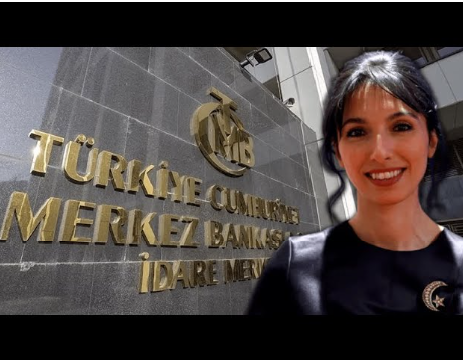The Central Bank of the Republic of Turkey (CBRT) Monetary Policy Committee (MPC) increased interest rates by 500 basis points in line with expectations. As a result, the one-week repo rate has risen from 30% to 35%. With the interest rate hike in October, the CBRT has now raised its policy rate for five consecutive months.
The key reasons highlighted in the bank’s justification for the interest rate hike are as follows:
- Geopolitical developments create risks in the inflation outlook due to fluctuations in oil prices.
- The Committee is determined to establish disinflation in line with the path in the Report for 2024 (YE2024 33% expected) with the effects of monetary tightening measures.
- Strong domestic demand, rigidity in service prices, and worsening inflation expectations continue to exert upward pressure on inflation.
- While it is expected that inflation will trend close to the upper limit of the inflation forecast range in the Inflation Report by the end of the year, a decrease in the monthly inflation trend is also to be seen.
Has the interest rate hike ended?
In its MPC note, the Central Bank of Turkey (CBRT) emphasized that inflation exceeded expectations in the third quarter of 2023 and is expected to be at the upper limit of the forecast range by the end of the year. The CBRT conveyed a message of gradual continuation of interest rate hikes. The bank noted that the pass-through of wage increases and tax adjustments to inflation had largely been completed, but inflation pressures continued due to rigidity in services sector prices and deteriorating expectations.
Therefore, after bringing its policy rate from 8.5% to 35%, it is possible that the CBRT will pause for a while and reintroduce interest rate increases towards 40-45% based on developments. perhaps after local elections.
The MPC interest rate decision text is provided below:
The Committee decided to continue the monetary tightening process in order to establish the disinflation course as soon as possible, to anchor inflation expectations, and to control the deterioration in pricing behavior.
In the third quarter, inflation readings were above expectations. The pass-through from tax regulations and cost pressures stemming from wages and exchange rates, which have been recently impactful, has been largely completed. The strong course of domestic demand, the stickiness of services inflation, and the deterioration in inflation expectations continue to put upward pressure on inflation. In this framework, while the year-end inflation is projected to be close to the upper bound of the forecast range provided in the Inflation Report (Report), it is also evaluated that the underlying trend in monthly inflation is on course to decline. On the other hand, geopolitical developments pose risks to the inflation outlook due to oil prices. Through the monetary tightening process, the Committee is determined to establish the disinflation course in 2024 in line with the Report.
Foreign direct investment, stable course of external financing conditions, continued increase in foreign exchange reserves, the positive impact of rebalancing in demand on current account balance, and the increase in domestic and foreign demand for Turkish lira denominated assets will significantly contribute to price stability.
The policy rate will be determined in a way that will create monetary and financial conditions necessary to ensure a decline in the underlying trend of inflation and to reach the 5 percent inflation target in the medium term. Monetary tightening will be further strengthened as much as needed in a timely and gradual manner until a significant improvement in inflation outlook is achieved.
To increase the functionality of market mechanisms and strengthen macro financial stability, the Committee continues to simplify and improve the existing micro- and macroprudential framework. Guided by impact analyses, the simplification process is advancing gradually. In this context, monetary transmission mechanism will be further strengthened by taking additional steps to increase the share of Turkish lira deposits. In addition to the increase in the policy rate, the Committee will continue to make decisions on quantitative tightening and selective credit tightening to support the monetary policy stance.
Indicators of inflation and underlying trend of inflation will be closely monitored and the Committee will continue to decisively use all the tools at its disposal in line with its main objective of price stability.
The Committee will continue to make its decisions in a predictable, data-driven and transparent framework.
The summary of the Monetary Policy Committee Meeting will be released within five working days.
